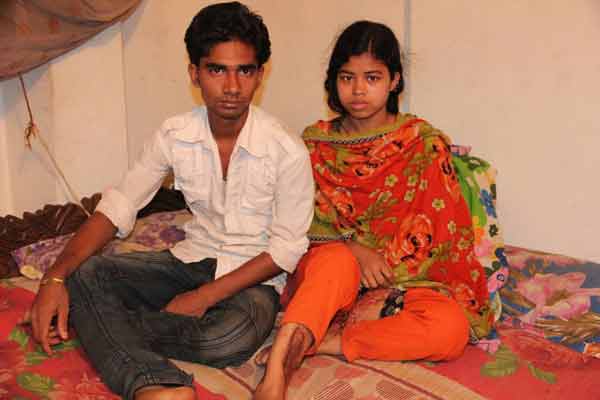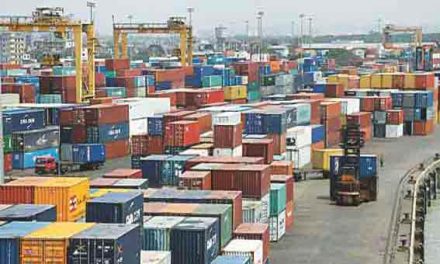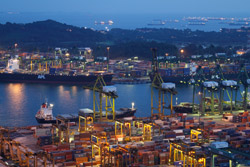Dhaka, Bangladesh (BBN)-When Bithi Begum tried to go back to work after a year’s convalescence, she says she realized a harsh truth: she was considered damaged goods.
“As soon as managers heard I had been in Rana Plaza, they turned me away,” Ms. Begum said. “They think we’re unfit, physically and mentally”, reports The Wall Sreet Journal.
Two years ago, the 20-year-old Bangladeshi seamstress survived the ordeal of being trapped under the ruins of the Rana Plaza factory complex near Dhaka.
The disaster, which killed more than 1,100 people and injured some 3,000 more, focused global attention on substandard conditions in Bangladesh’s garment industry.
Bangladesh exports billions of dollars of garments annually to brand-name retailers world-wide.
Following criticism from human-rights groups, international retailers who source their products from Bangladesh set up two separate safety programs to inspect and improve the country’s 4,000-odd factories.
In the two years since the collapse, compensation has been slow in coming and has been distributed unevenly, according to survivors and families of the deceased.
Ms. Begum says she has received just 95,000 takas ($1,230) as compensation so far.
“That’s what they think my life is worth,” she said.
Ms. Begum says she earned 9,000 takas a month as a seamstress before her factory crumbled on April 24, 2013.
She worked on the seventh floor of the eight-story building, and suffered multiple fractures in her right leg in the collapse when a concrete slab fell on her.
Doctors have operated twice, she said, inserting a metal rod to keep the bones in place.
The injuries mean she may not be able to work a sewing machine again. She applied for work as a quality checker, which doesn’t require operating a sewing machine.
The Rana Plaza Donors Trust Fund, a fund set up in September 2013 to provide compensation to Rana Plaza survivors and victims’ dependents, has a $7 million shortfall, according to the International Labor Organization, which chairs the fund.
Experts hired by the fund’s steering committee, which includes representatives from brands as well as labor groups, calculated that around $30 million would be needed to provide adequate compensation to more than 3,000 claimants.
Labor activists say the brands should do more. “For an industry that is all about image, the garment brands are taking shockingly long to do the right thing and close one of the most shameful chapters in the history book of the global clothing industry,” said Jyrki Raina, of IndustriALL, an umbrella group of unions.
Brands say they are making voluntary contributions to help Rana victims.
VF Corp., owner of labels such as Wrangler and The North Face, has donated $400,000 to the compensation fund, although the company wasn’t purchasing clothes from Rana Plaza factories, a company spokesman said on Wednesday.
“Although we weren’t sourcing from Rana at the time of the tragic collapse, that doesn’t diminish the role we can play in joining others to help affected Bangladeshi workers and their families,” Craig Hodges, a VF spokesman, said.
Last week, the Italian retailer Benetton announced a payment of $1.1 million to the fund.
Benetton clothes had been manufactured in a Rana Plaza factory shortly before the collapse.
Marco Airoldi, CEO of Benetton Group, said in a statement: “Whilst there is no real redress for the tragic loss of life we hope that this robust and clear mechanism for calculating compensation could be used more widely.”
Labor groups had called on Benetton to contribute $5 million. “Unfortunately, the true colors of Benetton are now revealed,” said Ineke Zeldenrust from the Clean Clothes Campaign, a labor-advocacy group.
Benetton says the company arrived at the $1.1 million figure after an independent assessment based on the company’s involvement in Rana Plaza.
The International Labor Organization said nearly 3,000 survivors and victims’ families have been paid compensation so far.
The amounts vary according to the severity of the injury. According to ILO documents, 95,000 takas amounts to the minimum compensation a Rana survivor would receive.
Ms. Begum says she received a document from the claims committee which showed she would receive no more than the minimum amount. She believes she is entitled to more based on her level of disability.
In the aftermath of the Rana Plaza collapse, some analysts predicted an exodus of Western brands from Bangladesh.
But following a series of measures taken to improve working conditions, many international companies opted to stay.
Bangladesh exported clothes worth $21 billion in 2013 and $24 billion in 2014.
Reflecting the confident mood in Bangladesh, the garment exporters’ association has announced a target of $50 billion in clothing exports by 2020.
“The glass, to most people, would be more than half-full right now,” said Ahsan Mansur, director of the Policy Research Institute, a Dhaka-based think tank.
“But ultimately, the image of brand Bangladesh will depend on how workers are treated.”

No Subscription? You Are Missing Out!
Join the business leaders of Bangladesh who rely on BBN's original reporting and in-depth analysis on business scenario of the country. We send only one daily email. No Spam Guaranteed!









